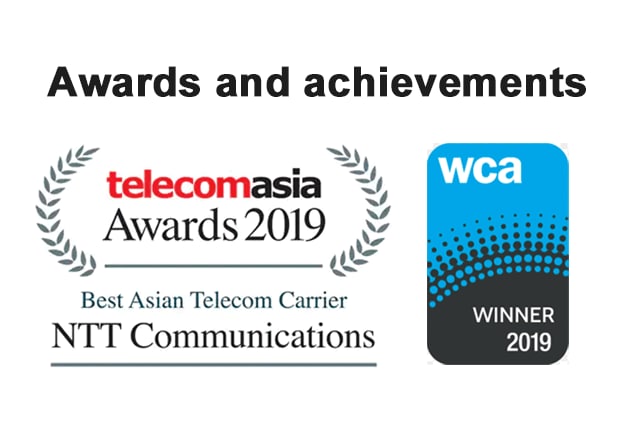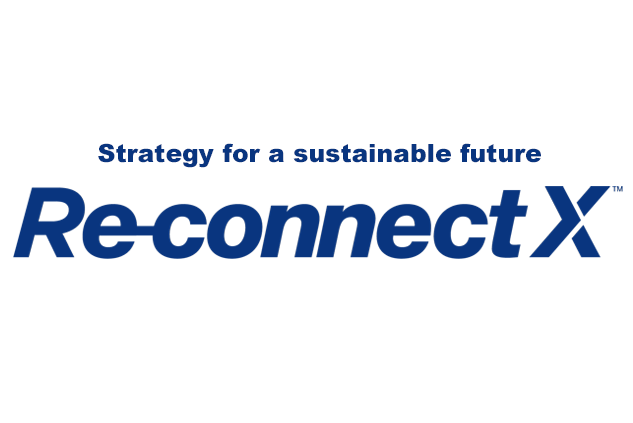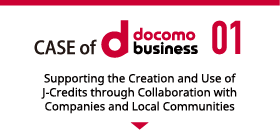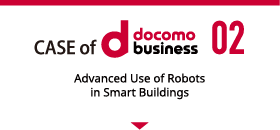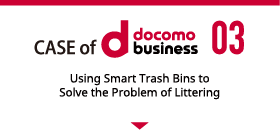
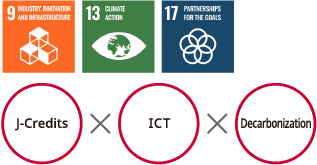
Supporting the Creation and Use of
J-Credits through Collaboration with
Companies and Local Communities
Growing Need for Carbon Credits
Companies are actively using carbon offsetting* to achieve carbon neutrality by 2050. Although the J-Credit scheme, through which the government certifies greenhouse emissions reduction, has gained attention as a reliable and promising option in Japan, only a small number of tradable credits have been issued, making it inadequate for meeting the expected increase in demand. Furthermore, the complicated certification process for creating carbon credits remains a barrier to broad adoption.
*A system that enables the volume of reduced emissions and absorption of greenhouse gases such as CO2 to be traded mainly among companies. A company purchases credits to offset (compensate for) emissions that it cannot reduce by its own efforts.
![[ Credit Creation through Methane Gas Reduction in Rice Paddies ]](/content/dam/nttcom/hq/en/about-us/csr/solution/2024/01/sct_img01.jpg)
Create Credits by Reducing Methane Gas Emissions from Rice Paddies
To promote decarbonization across society, NTT Communications is committed to supporting the creation of J-credits through ICT solutions. Our collaboration with Yanmar Marché Co. Ltd., announced in August 2023, is one such initiative in which credits are created by reducing the emission of methane gas from wetland rice cultivation for constructing an agricultural model that lessens environmental impact while at the same time increasing farmers’ profits.
About 45% of methane gas emissions in Japan are derived from cultivating rice, and its greenhouse potential is about 25 times greater than that of CO2 emissions. Mid-season drainage is a common practice in wetland rice cultivation, and we were able to confirm that if the drainage period is extended by about a week, methane emissions can be reduced by roughly 30%. This was approved as a new method under the J-Credit system in April 2023.The initiative will support the farming operations of Yanmar Marché’s contract farmers as they introduce an extended drainage period and utilize ICT solutions for cultivating rice. We will install the MIHARAS IoT sensor, capable of obtaining data on soil temperature, water levels, water temperature, humidity, and air temperature, in the rice paddies and use the data to improve the efficiency of the work involved in credit certification to create highly reliable credits. The two companies will also support the branding of the harvested rice to help farmers expand their business.
This initiative was launched during the planting of the 2023 rice crop with 12 farmers in 6 prefectures including the Tohoku and Hokuriku regions. The extended drainage period showed no negative effects on the harvested volume, and the method was certified as a J-Credit in January 2024. In the current fiscal year, use of the method has expanded to around 20 prefectures, which is expected to significantly increase the volume of credits to be created. We will continue to strengthen our collaboration with companies and local communities to contribute to society as a whole through decarbonization.
Using GX to Create the Future of the Next 100 Years

-
Daichi Mizushima
Solution Services Department
Business Solution DivisionWhile the need to create J-Credits continues to grow, the limited number of screening organizations and the labor-intensive registration and application process have formed a bottleneck hindering the expansion of J-Credit creation. We also believe that one of our key missions is to support the creation of reliable credits by providing ICT solutions, such as our IoT sensor, to ensure the credits are not considered greenwashing, or deemed as superficial consideration for the environment. In addition to the aforementioned rice paddy credits, we are also applying our solutions to create credits through the use of biochar on farmland, as well as those derived from forests that can contribute more directly to decarbonization (see page 66). Driven by a sincere desire to create the future for the next 100 years through co-creation with various partners, we will continue to engage in GX projects that contribute to realizing a decarbonized society and revitalizing regional communities.
Note: The content of this article is as of December 2024

 EN
EN
